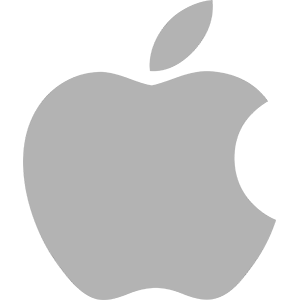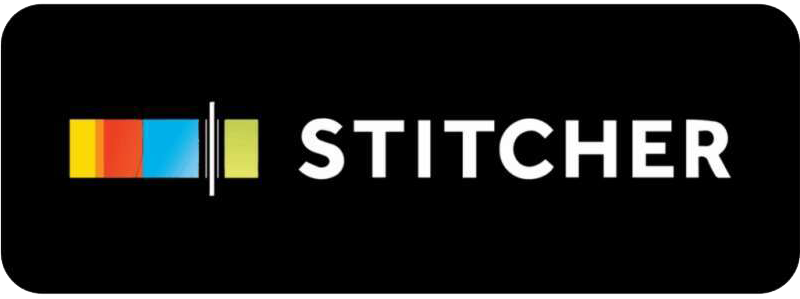July 13, 2022
Listen on:
Effective Business Communications in a World of Distraction

Join Kenning Partners Cathy Boeckmann and Jerry Stauduhar as they speak with Mike Merrill about the challenges facing business communicators today. Despite a wealth of data–or maybe even because it is so plentiful–drawing out the “so what” and generating business insights seems ever more difficult. Experts in technology, the creative arts, or medicine can do great work and gather excellent data, but they can find it challenging to pull it together and present it in a way that helps decision makers take action. And the tools that allow for greater collaboration–like virtual meetings and cloud-based documents–can actually make things worse.
Find out how Cathy, Jerry, and their Kenning colleagues have addressed these challenges using tried and true methods as well as innovative new ways of meeting today’s needs. From investing in communications skills to building a culture that rewards judgment over raw information, see how Kenning has helped clients to make shared meaning.
Listen
Authors:
Related Articles:
Transcript:
Mike: Welcome to knowing Kenning, I’m Mike Merrill and I’m here today with Kenning associate partners. Jerry Stauduhar and Cathy Boeckmann.
Cathy: Hi Mike.
Jerry: Good to be here, Mike.
Mike: And today we’re gonna be talking about the growing importance of effective communications in the business setting. I know we’ve always experienced this as being important, but I’m getting the sense that we’re hearing from our clients and others that the need is growing and more urgent.
Cathy: I would have to agree with that. I mean, it’s hard to argue that good communications hasn’t been important in the past, but I think there are some factors that are making investing in helping people in the workplace become better communicators, even more important.
Jerry: I think there was maybe this middle period from the old way of doing business prior to everything going digital,where people had this attitude, “Oh that old fashioned pyramid principle stuff and all of that, that doesn’t suit our needs anymore. That doesn’t seem to fit the way we work today.” But we’re actually finding that people do need that stuff.
Mike: And when you say “pyramid principle”, Jerry, what are you talking about?
Jerry: So The Pyramid Principle was a book written by somebody named Barbara Minto Back in the seventies she was part of McKinsey and she helped develop a whole style of communicating in the management consulting space, where we really are trying to push clients towards a very particular perspective that we want to sound very well reasoned and have a lot of logic and bake a lot of data into it. And the pyramid top down approach turns out to be the best way.
Mike: Cathy, you mentioned that you believe there are some trends that are happening that may be creating this sense of importance and urgency.
Cathy: For a while, I think it was the case that people believed that consultants needed to be really good at communicating PowerPoint. And essentially that consultants are the people who sell PowerPoint decks for a living.
And so of course, you’re gonna invest in building their skills for doing that. But I would say that given a lot of changes that are confronting people in the workplace now, there’s a good reason for everybody to take stock of how they communicate and build their skills.
One really obvious trend, I think that’s confronting just about every business, is that it’s really hard to create clear message driven communication when people are just swimming in information. There’s a tendency for people to try to collect all the best data that they can find and present it to other people, but the complexity and the volume of that data gets in the way of the clarity of sharing insights on the basis of that information.
And the problem only gets worse than more data people have. So just to give an example, as the business cycle fluctuates, as organizations deal with pandemic issues like furloughing people and then having to hire them back now that a lot of sectors are feeling more healthy. People need to present the data to support rehiring after furloughing, and they need to make a data based case. So pulling all of this data out of HR systems and making a case out of it is a very difficult thing to do. And these decisions need to be made really fast.
Mike: So for example, today since everything’s on the internet, people are constantly interacting with websites and apps. It’s creating this incredible amount of data exhaust. Every time we open a page, every time we click on an image, every second of a video we watch or don’t watch. Businesses are collecting that data. And what do they do with it? How do they possibly analyze it? And then very importantly, how do they present it?
Cathy: Completely. As you described Mike, you’re collecting data really by the microsecond. And the whole point of collecting that information is to develop insights into your consumers and customers, and to serve them better. But if you can’t translate that information into actionable business insights, you’re really just presenting people with just charts. Essentially, that really slows down conversations and makes it difficult to reach really actionable business decisions.
Jerry: Yes, I think there are masses of data out there that, particularly for internal business purposes, making decisions, people are having a really hard time cutting through all the clutter and figuring out what really matters. And we use the phrase “so what” a lot.
Picking up on what Cathy was saying you know, all of these data, but then lots of really junior people coming into fairly senior roles, particularly in startups and tech companies who are really great at all of the tech stuff and the gathering of the data and so much of what they do. But again, what they’re not so good at naturally is communicating to senior level audiences, standing back from their work and saying, okay, so what, what does this matter to a senior leader? How does what I’m doing contribute to making better business decisions?
Cathy: I would build on that and say that the same pattern applies to people who are in industries like the video game industry, where people who rise through the ranks there are rising on the basis of the mastery of a certain creative craft. But it doesn’t necessarily come along with the mastery of that creative craft that you’re also gonna somehow develop the ability to communicate in a way that business audiences are gonna find economical and helpful. Those skills are skills that you actually have to decide to develop.
Jerry: Absolutely. In fact, I had a coachee who was a senior creative with a gaming firm. They’ve launched very successful games, and she is great at doing her job, the creative pieces, running the rest of the artist, developing beautiful visuals for their games, but felt really at sea when it came to having to interact and present ideas to senior audiences.
Mike: There’s a couple different groups here, right? There are people who come up through the creative arts. There are people who come up through technical fields, whether that’s technology or finance, or maybe they’re medical, they have these highly technical skills, are probably very adept at using data in many cases. But presenting it in a way which is compelling at the executive level at the strategic level, at the level of scaled action is probably what’s being challenged here.
Cathy: I think you’ve got that exactly. And adding on top of that challenge is the context in which people are convening for these business conversations, this hybrid workplace that we find ourselves in now, it on the one hand requires sharing documents more, you can share a document with a click of a button and everybody can see it. But on the other hand, it’s a really distracting kind of environment to be in.
If you’re not in person and you don’t have those human interaction cues, you’re presenting in this hybrid sort of zoom slash teams universe, where there’s all kinds of additional layers of distraction. People are simultaneously chatting with each other in the same window that you’re trying to share your information. Maybe they’re getting other notifications. From their other business applications right there on the screen. It just makes it that much harder to get your insights to cut through and really, have people engaged with them.
Jerry: I often say to my clients, Cathy, I think you do the same, is whether it’s a presentation or a meeting and you’re presenting some level of content. If you can get your audience to walk away with a small handful of ideas that they remember without the aid of looking at a slide or your deck you’re doing good. You just have to cut through the noise and really get to the heart of the matter for folks, to get meaningful action.
There is more collaboration going on in developing documents, right? It’s great that people do have these opportunities to collaborate. And we have platforms like Google Docs, which makes it really easy to work on stuff.
Nobody seems to develop a piece of content all on their own. There’s always a team. There’s almost always a partner. There’s other people involved. So not only do you have the sharing platforms, but it’s the shared authorship.
And very often people just don’t have common language, common vocabulary for even talking about what’s going on with their document, they’re just all thrown stuff at it versus anybody having a plan for how we put it together, how we talk about various aspects of it from how well the main messages are coming out to does the story make sense, they need a common vocabulary in order for that to be effective. And I think that’s often missing, which then turns this collaboration into just chaos.
Cathy: As we’re enumerating the challenges to clear business communication, I feel like this one is maybe at the root of so much of it. Is that people just start documents and then they just start editing each other’s edits and then they edit over their own stuff. It’s uncoordinated, I think is the best way to describe it.
If the message isn’t clear to the people creating the document, it’s certainly not gonna be clear to the people who are the audience for the document. And unfortunately, I think the kind of collaboration that goes on in live editing of documents becomes more of the problem rather than the solution.
Mike: I think you’ve really enumerated a lot of the current trends that are happening that are accelerating the problem. Good communications in the business sense has always been hard to do, but you’ve really pointed out the ways in which this delusion of information, these junior people trying to present to a senior audience, the hybrid work and the expectation of collaboration on documents, how all of those are exacerbating a problem that was already there. So what do we do about this?
Jerry: We’re seeing our clients the best organizations, the best teams, they’re doing two things intentionally. First of all, they’re creating a culture where good communication is actually prioritized. And within that, is communication that comes with what we call judgment over information. Then the second thing they’re doing is, intentionally making skill building opportunities available to everyone.
Mike: Jerry, tell me about what it takes to build that culture of judgment over just raw information.
Jerry: Leaders need to set an expectation with all the people that report to them that says, I don’t want you to just package information nicely and push it at me and leave it up to me to decide what it all means.
I expect you as part of your job and part of your expertise to take a point of view about what the potential implications of all of this is, either what’s a new insight that’s gonna lead us, somewhere else in our thinking, or what would be a recommended action coming out of your work.
Cathy: I think that the expectation setting is so important. People take very seriously what they feel that leaders are asking for and reinforcing. That essentially is culture. And just to give an example, if you have a strong communications culture, people will turn to each other and say, what’s the “so what?” It becomes a form of accountability that they hold each other to, and all of us can get lost in the details of the information in our area of expertise. It’s the water we swim in.
But you just have to lift your head up occasionally and say, so what matters? What’s the insight? Team members who can ask that question of each other, support each other.
Jerry: Leaders obviously need to provide the strategy, provide the vision, provide the leadership, but they rely on the folks underneath them to bring what’s important to the table for discussion.
Cathy: Now, sometimes we do hear that people who work within organizations find that uncomfortable, that something feels a little risky to them about showing up to a meeting with senior people and telling them what the insight is or telling them what the course of action is that needs to be taken.
And so, the other thing that we see really good organizations doing is their instilling a mindset in people that we’re all together in this, we’re all making sense of this information together. And so helping other people learn is more important than being right. The goal of showing up to a meeting with insights is not to have everybody say yes, we 100% agree with you.
The goal is to show up, share your insight and say, what am I missing? How could this be better? Why don’t you chip in what you know? And then we’ll collaboratively try to come up with the best answer.
Jerry: I love that Cathy. I think it takes pressure off of people as well. If you go in with this mindset, that victory is gonna look like I get through my presentation, I get through my deck and nobody pushes back once and I don’t have any questions and they just buy it lock, stock and barrel. That just never happens.
So, you know, don’t set yourself for that expectation. It’s so much easier to say I’ve done my best thinking. I’ve done my best to make it clear here. And, I’m wanting to hear what I’ve missed and what other ideas are at the table that could ultimately make our thinking and our decisions on this matter better.
Cathy: To address the challenges that we see in so many organizations, what Kenning has been doing for easily the last two decades is building both skills and mindsets to help organizations establish a communications culture. And within that culture, an expectation that people are communicating message first, starting conversations, in the right place and that they have the skills to allow them to do that successfully.
Mike: And I’m thinking what allows that sort of culture to grow and flourish is that we have a shared vocabulary, we have some shared skills. You mentioned this, Jerry, what do those look like?
Jerry: There are three core skills that we teach through our coaching one on one, sometimes with group and in group workshops. We talk about the concept of synthesis, of top-down storylines, and a framework for developing effective single visuals or single slides in PowerPoint called SCAN.
Mike: So Jerry, I heard there’s three skills: synthesis, storylines, and SCAN. Tell me about synthesis.
Jerry: Synthesis is a skill that’s all around so what. If I know these three facts, if I know these 10 facts, if I know these hundreds of facts, what can I say that I know that is going to help push the conversation further? How do I synthesize all that data into the real key insight and use that in, developing my communication?
Cathy: A core part of synthesis is bucketing information. It sounds so basic, but it is really a light bulb moment for a lot of people. When we say to them 10 bullet points, on a slide is too many. It taxes our working memory too much. Your audience is just going to glaze their eyes over this wall of content.
Synthesis allows you to say, which of these bullet points really belong together? Can I group them? And does each group of bullet points have a message that’s either a statement of fact at a higher level than those detailed bullets, or maybe even a recommended action that’s associated with those bullets. And if you can layer those insights in. It transforms the information into something that people can process.
Jerry: We encourage people when working with a topic to take all their data and to synthesize from the bottom up. So starting with all of the data-grouping, working upward in a pyramid shape until they get to one overall, so what takeaway at the top of a pyramid.
Then it turns out once you’ve got that, you can from a storytelling standpoint, start with that main message. Let’s just put right out there this is the main thing I want you to take away and here are the main ideas I’m going to use to support that assertion.
Mike: That’s a synthesis. What do you mean by storyline?
Jerry: A storyline is basically an outline for the story you’re going to tell through a document, through a communication, could even be an email. A top down story, the kind of story we’re talking about really applies to any kind of business communication and what that means is you’ve done all this synthesis and you’ve ideally gotten to one major takeaway for this communication, once you discerned what that main so what is, then from a storyline standpoint, reverse the order.
We want to start the story with that main takeaway and put our support afterwards. And in that way it becomes a pyramid. One big idea at the top, a small number of ideas at the second level down, and then many more ideas as you move further and further down your pyramid.
Cathy: I have heard this type of arranging information referred to in some organizations as the acronym bluff, and it stands for bottom line upfront. This is very similar to the idea of what we would call a top down storyline, which means as close to the beginning of the communication as possible, you want to put the one main message that you want everyone to hear and remember.
And it seems so obvious when you say it, but I have seen hundreds of documents created in different organizations that don’t follow that kind of story structure. They almost always start out with something they call background, where they give you all kinds of contextual background on the topic. And then they might go into a section called findings where they add in all the information that they’ve collected on the basis of that background.
And somewhere near the end, you might get a conclusion. Or possibly an observation, or maybe a recommendation. And this just seems to be very natural for a lot of people. They don’t understand that they’re actually requiring their audience to absorb so much information to get to the main point.
Jerry: Really standard in scientific and academic writing, it’s really just not efficient in the business world. Talking with senior leaders in particular, their purview is so wide. They’ve got so many topics that they’re dealing with. They need to get the big picture really fast, in order to be able to engage on it appropriately.
Mike: And now SCAN. This sounds to me like an acronym.
Jerry: It’s an acronym. The S stands for “synthesis” again. The C four “coherence”. The A for “audience appropriate”, or “audience tailored”. And the N for a “necessities only” approach. Within that four letter acronym, we’ve encapsulated all the important things that we think you need to think about in putting together a visually oriented page, a PowerPoint slide, et cetera.
Every slide, every visual needs to have good synthesis, meaning it has a so what, and we would typically recommend that the so what goes right up at the top of the slide as the main title on that slide.
Then the coherence piece is let’s make sure that the visuals really match the message. So whether that’s data driven or some other kind of conceptual visual, are we using the right chart form that’s gonna help illuminate that message that we’ve put up at the top of our page. We wanna make it really easy for our audience to see the match between the message we’ve just given them and what we’re showing them in the body of that slide or that exhibit.
Any piece of scan is around audience tailored, and here we wanna make sure that we’re doing what we can when we can to first of all, tailor the material for a particular audience, for a particular setting. So if it’s a senior level audience, and if it’s supposed to be an informational briefing, it’s gotta be pretty high level.
If you’re doing something for people who are more mid-tier, who need to own all of the information, all the detail that might look significantly different. So you wanna be aware of who you’re talking to and what the setting is going to be. Is this gonna be a big ballroom? Is it gonna be Zoom? You need to tailor the content for the setting and for the audience.
That doesn’t change the message, the ideas, the data, all of that can be the same, in various versions. It’s just the level of detail and what you call attention to that changes.
And then finally, with the N in scan, the fourth letter there, necessities only. What we mean here is: let’s eliminate all the clutter that’s not absolutely necessary. Let’s maximize white space. White space is your friend. Less is more. An opportunity to just economize everything on the slide, so that the main ideas, the main visual, if there is a visual, all of that are what’s gonna get the attention. And there’s just not a lot of noise that people have to filter out.
Mike: You’ve spoken to us about some of the challenges that are making effective executive communications more difficult. We’ve talked about some of the ways that we can address those challenges. Do you have some recent examples of how you’ve approached this?
Cathy: So given that the challenges to communicating clearly and effectively in the business setting have only increased in the last decade or so. We at Kenning have also been innovating the kinds of support that we’re providing to our clients. And we are seeing some really great results.
I think in the old world there was this attitude and I would say to some extent, we fell into this trap also, of believing that training was the answer. That if you just brought a team together and took them through a workshop where they practiced the skills that would fix the problem.
But increasingly, I don’t think that is the case, that the trends that we’re seeing with the distractions of the hybrid environment and you know, team members who don’t have a solid grounding in executive communications already with the collaboration that people are doing on documents in real time, with all of the increasing challenges that people are seeing, that a workshop is only part of the answer. That you need to supplement the skill building that happens really effectively in the workshop setting with a collaborative experience that allows people to work in real time on a real document that they’re delivering to a real audience.
Let me explain what that might look like. With a couple technology clients of ours. What we have done recently is we have asked to work with an intact team of people who are planning to collaborate together on a particular communication work product. And we’ve said, let’s build the skill building into that work that you’re doing in a just in time kind of way. So assemble a team of people who have a communication product they’re gonna work on. Then we give them the workshop experience. Then we take them through almost essentially a coaching sprint, so that group of people then works with a Kenning coach on the document that they’re creating for the communication occasion that’s coming up. They rework that document in real time.
They already then have the skills and concepts from the workshop so that we can make that coaching really effective and have a common vocabulary for what we think of as a good document. And then they present that document to an audience and then reflect on how that went.
So we have a client where there are extraordinarily talented people who mostly come from engineering backgrounds, running the back end of a consumer facing internet platform. And they’re gathering incredible amounts of data about what’s happening on that platform. But the challenge that they have is actually bringing insights to a place where people can act on them and make decisions.
Jerry: I’ve participated in a number of these sprint type programs with a couple of different clients. And it’s always great to see the collaboration. Often people are pulled together for specific teams. They are not people who work together all of the time.
And now we’ve given them some tools for having a common language and for thinking about stories and putting documents together in a different way. And they get really excited about it, they are excited about the ease with which they can tell their story now, feel good that they’ve gotten it down to really what matters, and find that it’s just so much more fun to actually deliver as well.
Cathy: Recently with one of our clients, they had recognized that the regular business updates that everybody was creating, presenting, and sitting through didn’t feel as insight driven as they wanted it to be. And so we took them through one of these sprint-like experiences and the results were great overall. I think even the senior people who went through this experience that Kenning led felt better prepared to talk about their line of business during these regular business reviews with senior leadership.
In our feedback survey, we were happy to discover that 75% of the respondents were a seven out of seven in their likelihood to recommend the Kenning program to colleagues. They saw the value and it felt like it was addressing the issues that they were facing and even better, 75% of the people in our participant feedback survey felt like they could now take the skills that they had learned in the Kenning experience and coach their own teams to more successfully have more message driven communication that cut through the clutter.
Jerry: That reminds me of another client, Cathy, too, where what we as Kenning actually did was train more senior people in some of these core skills, but they’ve decided these are so important we wanna have this embedded culturally among our broader team here. So rather than always have outsiders come in, let’s get our senior leaders and those who are interested skilled up in teaching these skills in lean workshops and short sessions and that’s worked out really well.
Mike: That’s heartening. It sounds like Kenning has been able to help clients achieve better, more effective communications, despite some of the challenges that we face in this information rich hybrid world.
Cathy: No doubt. I think that the skills are tried and true. What we really feel like allows people to use the skills successfully is all the other stuff that we do. The culture, talking to people about the process that they use to create their documents. This is what really brings it to life and is meeting the moment.
Jerry: I think that’s right. There are books people could read that cover a lot of the topics that Cathy and I cover in our work, but you know, the world is so complex that people need that extra handhold to try something different.
Mike: If someone’s interested in the Kenning programs, how could they reach you?
Cathy: We would love to hear from anybody who’s interested in learning more. You can go to the Kenning website and contact either me, Cathy Boeckmann, or my colleague, Jerry Stauduhar. We would be happy to learn more about the challenge that you’re facing and see if there’s a way that we could be helpful.
Mike: Jerry, Cathy, thanks for talking to us today. I think this will help people reflect on what kind of communication culture their team, their organization, has.
Jerry: Thank you, Mike, this is the topic that we’re passionate about and really excited to get a chance to chat with you about it today.
Cathy: Yeah. Thanks Mike. It was fun.







